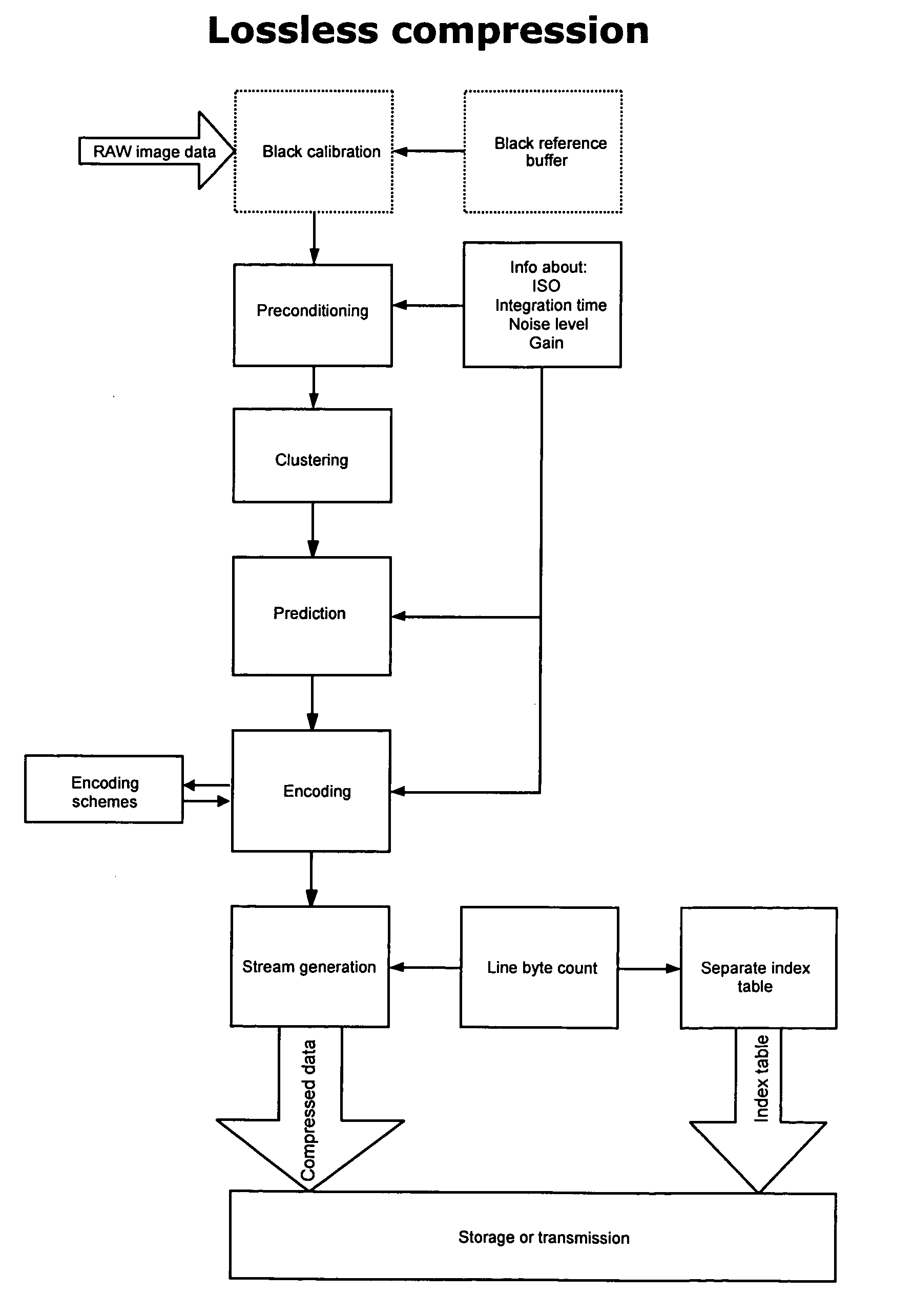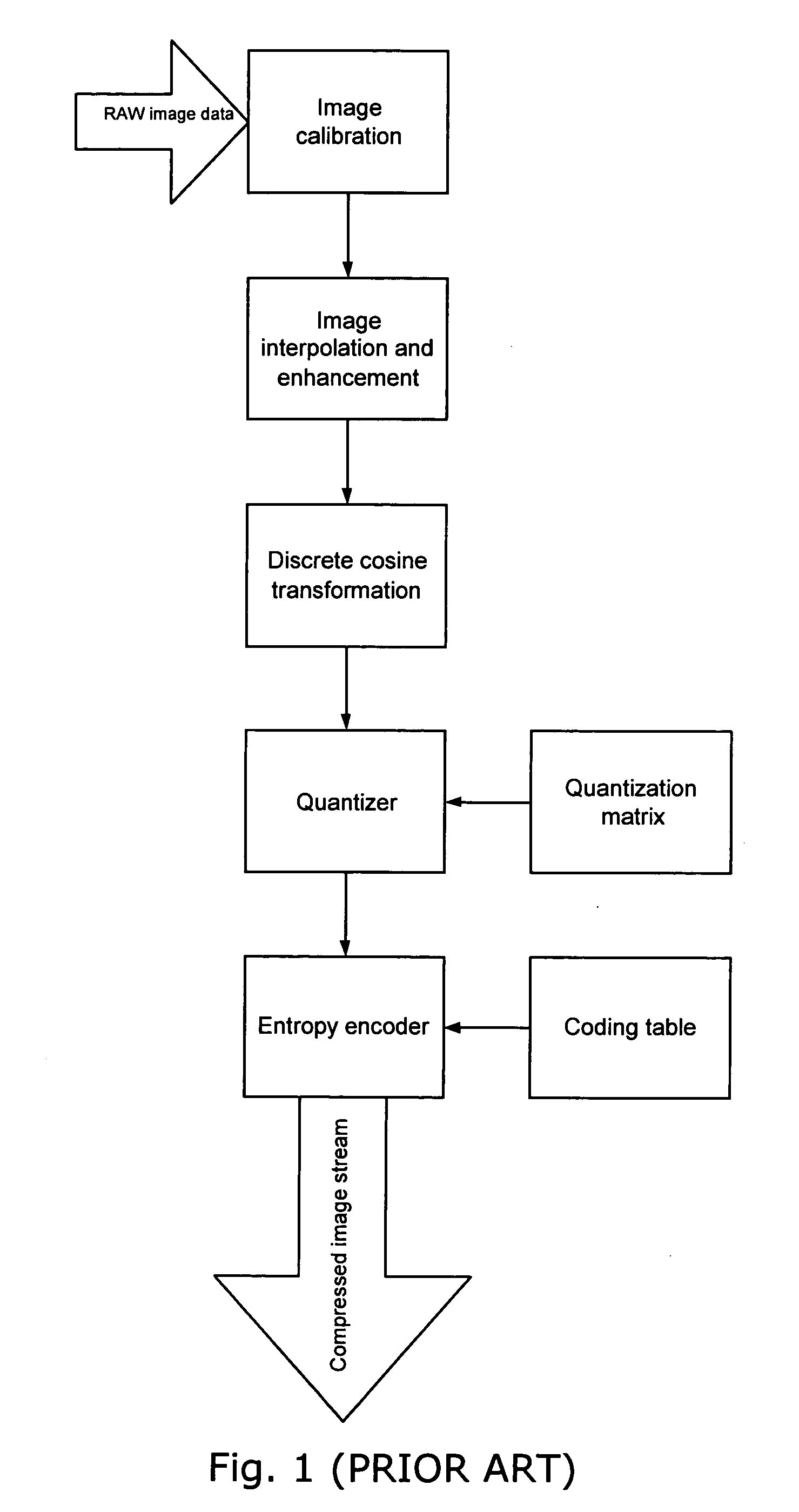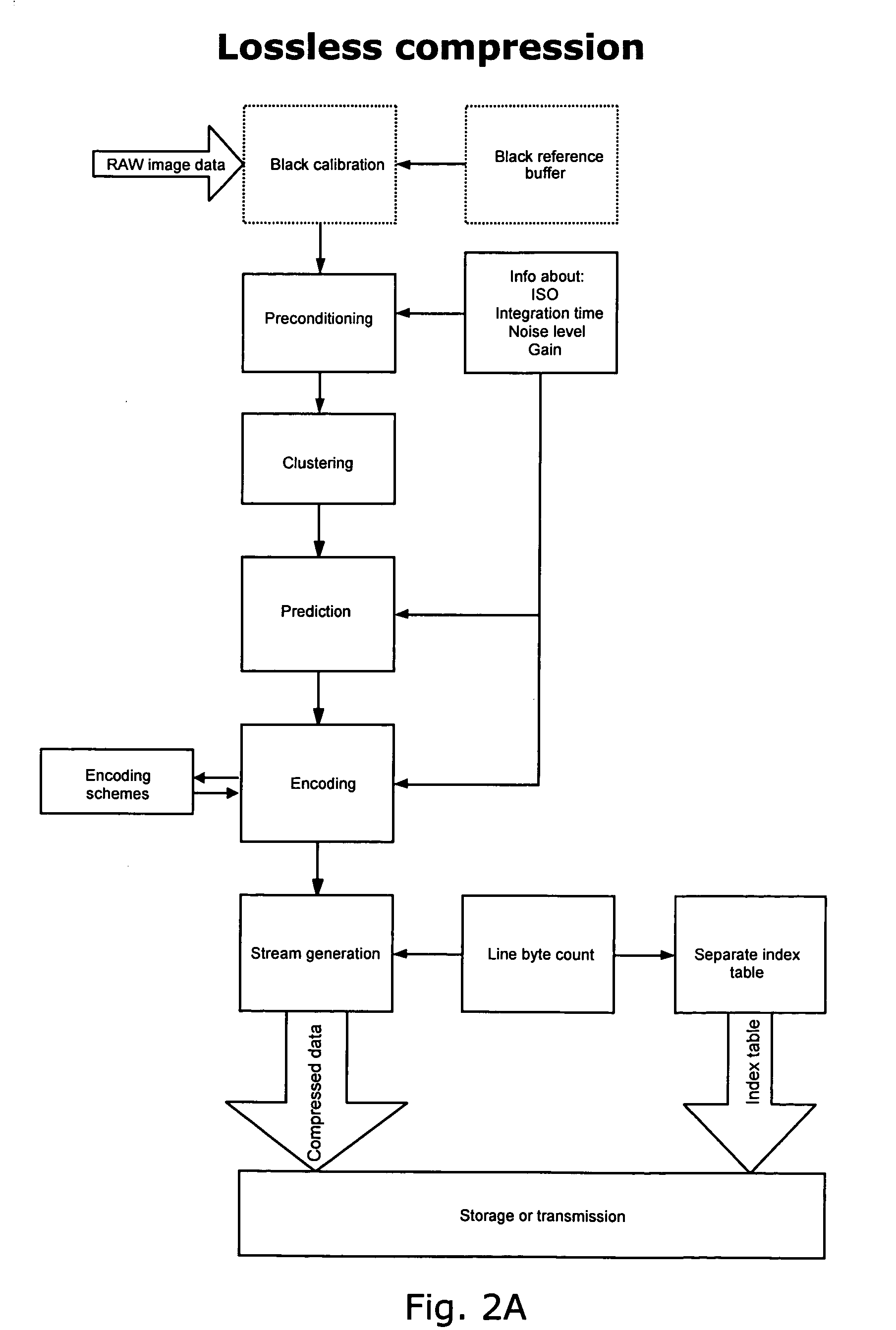Image compression for rapid high-quality imaging
a digital image and compression technology, applied in the field of lossless or reversible, near lossless, lossy compression and decompression of digital image data, can solve the problems of increasing system bandwidth, increasing complexity and cost of system, and requiring a lot of silicon to be implemented in hardware and software, so as to reduce cost, increase performance, and be easily implemented
- Summary
- Abstract
- Description
- Claims
- Application Information
AI Technical Summary
Benefits of technology
Problems solved by technology
Method used
Image
Examples
Embodiment Construction
[0081] The invention provides a digital imaging system having a compression section implementing an algorithm for lossless or near-lossless compressing high-quality image data. Corresponding block diagrams of the algorithm are shown in FIGS. 2A and B. The algorithm contains a novel structure which enables very fast on-the-fly compression of image data. The digital imaging system can be a digital camera back for a portable digital camera controlled by a camera operation system.
[0082] In the following, an embodiment of the part of the image system related to the compression of images is described in relation to FIG. 3. The compression section 10 is positioned close to an image sensor 12, receiving data directly from the sensor 12 through analog amplifier 13 and analog-to-digital converter (ADC) 14. The compression section comprises a number of blocks and processors for performing various operations in relation to the compression, and is connected to a memory 11 holding routines, tabl...
PUM
 Login to View More
Login to View More Abstract
Description
Claims
Application Information
 Login to View More
Login to View More - R&D
- Intellectual Property
- Life Sciences
- Materials
- Tech Scout
- Unparalleled Data Quality
- Higher Quality Content
- 60% Fewer Hallucinations
Browse by: Latest US Patents, China's latest patents, Technical Efficacy Thesaurus, Application Domain, Technology Topic, Popular Technical Reports.
© 2025 PatSnap. All rights reserved.Legal|Privacy policy|Modern Slavery Act Transparency Statement|Sitemap|About US| Contact US: help@patsnap.com



